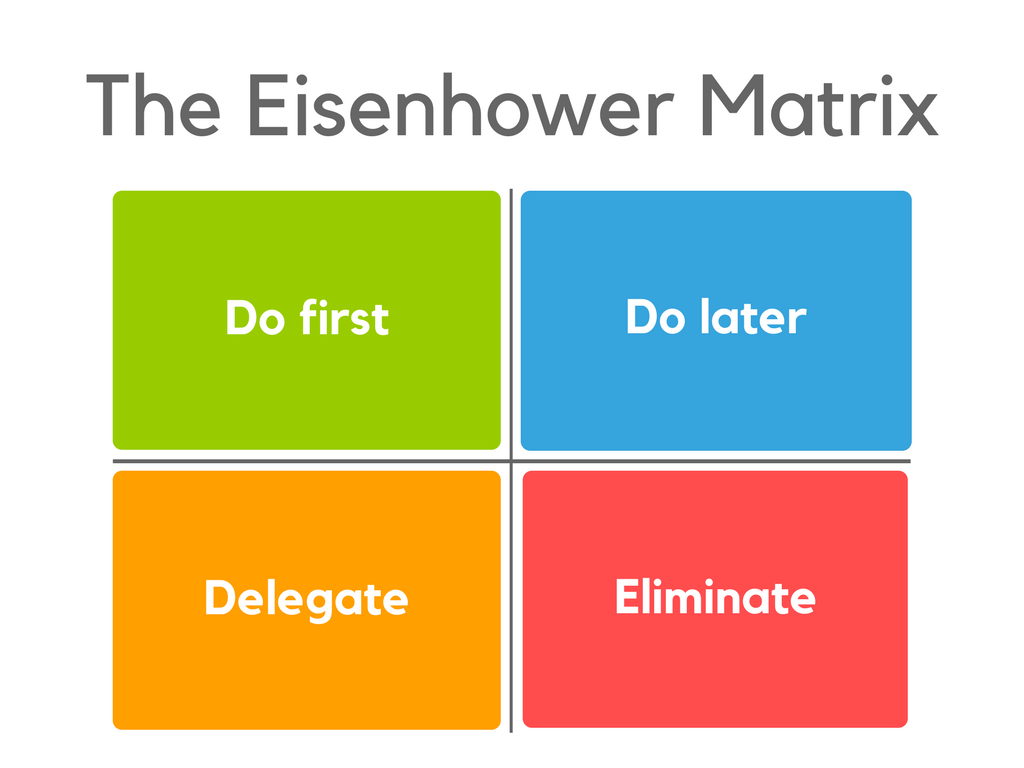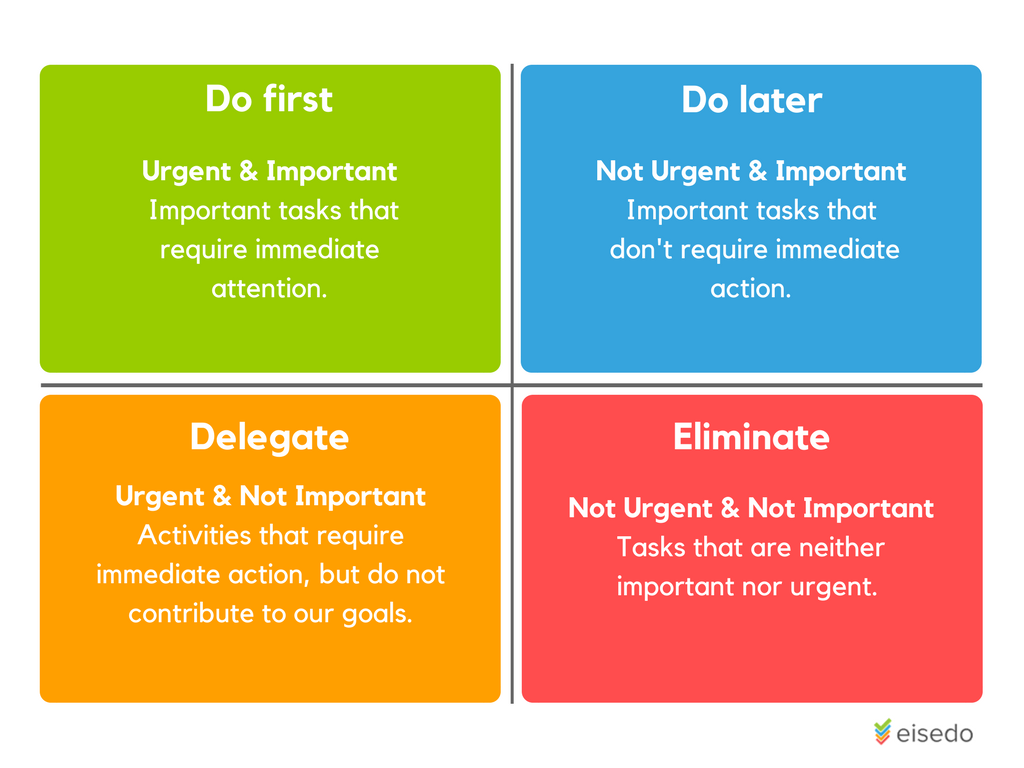Forget All Other Productivity Hacks — The Eisenhower Matrix Is All You Need!

Let me ask you a question.
How many times have you sat down to get something done and asked yourself the same question: “Where should I start today?”
Whether you’re a student, employed or an entrepreneur, we all face the same challenge.
Making a to-do list is easy, but knowing how to tackle it in the most productive way isn’t.
Here’s where the only productivity hack you need to know comes in — the Eisenhower Matrix.
What is the Eisenhower Matrix?
The origins of the Eisenhower Matrix date back to the 1960s. The time management method recently enjoyed a spike in popularity after Stephen Covey mentioned it in his book: The 7 Habits of Highly Effective People.
For those of you who haven’t heard of the Eisenhower Matrix before, here’s a quick overview.
History
The 34th President of the United States, Dwight ‘Ike’ Eisenhower, is the man behind the Matrix. Before his presidency, Eisenhower served as a general in the United States Army and as the Supreme Commander of the Allied Forces during World War II.
The decisions he made throughout his life and his approach to problem-solving resulted in him becoming renowned for his ruthless decision-making abilities and productive nature.
Overview
Eisenhower’s decision-making method boils down to two simple criteria: urgency and importance.
“What is important is seldom urgent and what is urgent is seldom important.”
Urgency vs Importance
So, how do these two simple criteria help you to be more productive?
By evaluating the importance of each task and contrasting it with the time you have available to complete it, you’re able to classify each task into one of four categories.
These categories are what form the four quadrants of the Eisenhower Matrix: Do first, Do later, Delegate and Eliminate.

Quadrant 1 — Urgent & Important
Tasks in the first quadrant help you achieve your goals. They’re too important to delegate out and too urgent to ignore until later.
These tasks require direct and immediate attention, and you should focus on completing these first.
E.g. ‘Produce sales reports’ or ‘Send out customer samples’.
Quadrant 2 — Important & Not Urgent
The second quadrant is for tasks that you can Do later. These tasks are still important but are less urgent. Once you’ve completed your tasks in the first quadrant, you can move onto these.
They also contribute to your goals, so you should complete them yourself.
“The pinnacle point is to focus on spending the majority of your time in the “Important and Not Urgent” quadrant. This is a peaceful place and provides you with the ability to work on things important to you while also giving you enough time to finish them.” — Julie Kantor
E.g. ‘Research new competitor company’ or ‘Complete employee satisfaction survey’.
Quadrant 3 — Not Important & Urgent
Your Delegate quadrant is for tasks that are less important but still require urgent attention. You should delegate out any tasks in this quadrant where possible.
Friends, family, classmates, colleagues, employees… Any of these people can help you out with tasks in this quadrant.
E.g. ‘Renew car insurance’ or ‘Book holiday flights & hotel’.
Quadrant 4 — Not Important & Not Urgent
The fourth and final quadrant is the Eliminate quadrant. Any tasks in here are what we call ‘time-wasting activities’. They don’t contribute to your goals and they aren’t urgent. Avoiding these tasks will help you free up more time for what matters.
E.g. ‘Find outfit for John’s wedding’ or ‘Renew magazine subscription’.
So, why use the Eisenhower Matrix?
It’s easy to lose sight of the distinction between the truly important and the merely urgent. Most of us fall into the trap of dealing with the tasks that are most urgent first — without considering whether they’re important. This often results in us neglecting our important tasks.
That’s why the Eisenhower Matrix is not a traditional to-do list. It pushes you to question every task and decide whether it contributes to your goals. In other words, it’s a value-based approach.
Is the energy you put into this task going to result in you moving closer to achieving your goals?
The reason the Matrix is so successful in helping people to boost productivity is because it constantly reminds you of the bigger picture. With a little perspective, you’ll find the work you do will become considerably more meaningful.
How to use the Matrix
When it comes to putting the Matrix into practice, you have two choices.
- You can try it manually, or
- You can use an automatic tool to help you
If you want to manually use the Matrix, you should make a list of the tasks you spend most of your time on. Then, assign them to what you feel is the appropriate quadrant in the Matrix. Work on the tasks in the order specified above.
If you want to make life a little easier for yourself, why not try a platform like ours to help you out? With eisedo, you simply add your tasks in and we do the hard work for you. Your tasks will be automatically prioritised into the quadrants of the Matrix and updated as you work through them.
To wrap up, here’s why the Eisenhower Matrix blows all other productivity hacks out of the water!
- It pushes you to question the worth of a task
- It helps you to work smart, not just hard
- Your work will be more meaningful and you’ll be more efficient
- Your productivity will soar!
So there you have it. A smart productivity hack that will provide you with real results. Give it a go and see how much more productive you become!